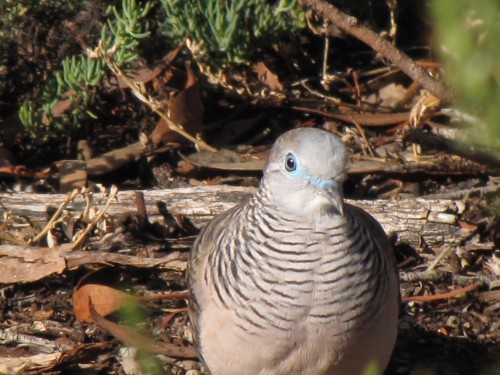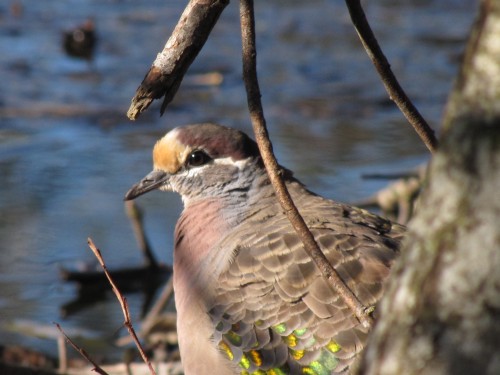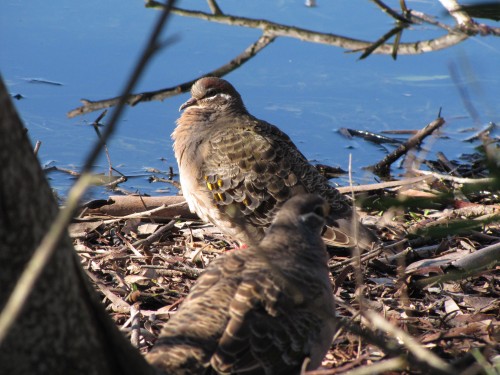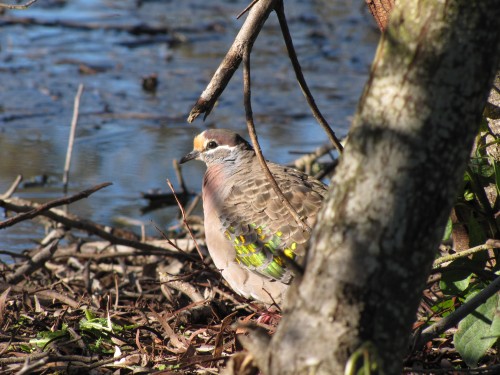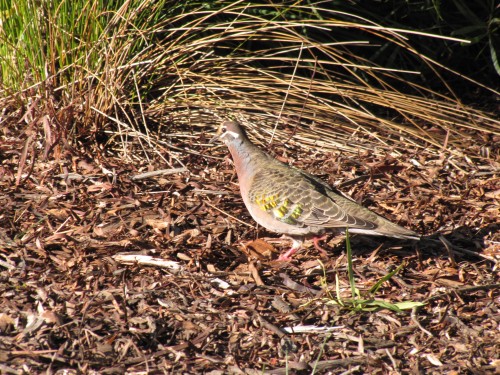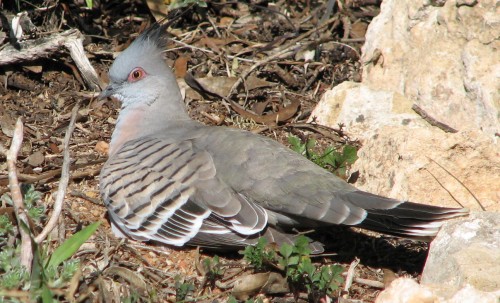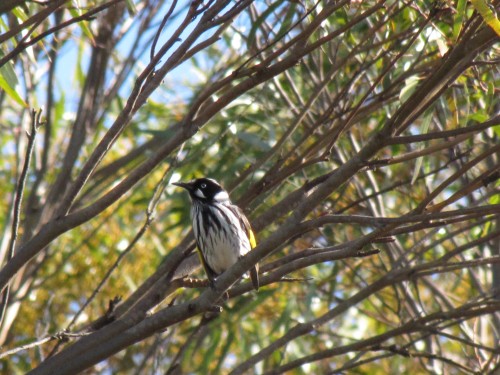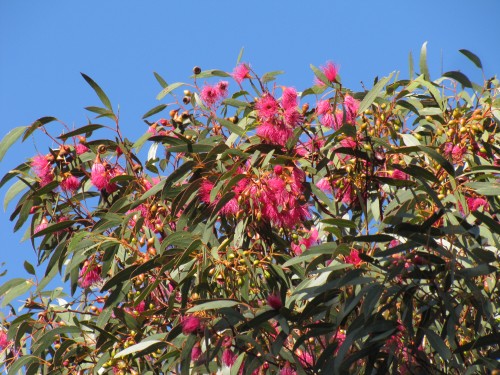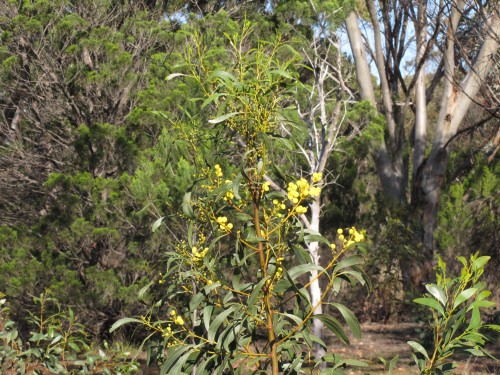An unusual sighting of a Chukar Partridge
Last week our neighbour popped in unexpectedly. We hadn’t chatted to her for a while so she was most welcome. She has known for years that I was interested in birds and had really enjoyed an illustrated talk about birds I gave some months ago to the local Senior Citizens group, Interestingly she had a bird field guide in her hand, open to a page showing a photo of a Chukar Partridge.
Her simple question was: ‘Is this bird found around here?’ She had never seen one before and was struggling to understand why she never seen it. She had been taking her dogs for a walk up the hill from our place. This is on the edge of Murray Bridge in South Australia and she was walking along the road through the start of an adjacent farming area.
This species is native to large areas of Eurasia. It has been introduced into Australia and I presume as game bird. In fact, some years ago some birds were released in the Gulgong area east of Dubbo in NSW. They never became established as a self-sustaining population. As there have been no sightings in recent years it is presumed they are extinct in that area.
So where did the bird seen by my neighbour originate? Interestingly, a year or so ago my cousin, who also lives here in Murray Bridge, sent me a photo of one in his garden. I can find no reference to this species being kept as an aviary bird though I guess that is one possible explanation if one has escaped. Perhaps someone has kept a few as meat birds and one escaped. Being a member of the pheasant family I guess that they are good eating. It is a wonder it has survived as we have quite a few foxes prowling the area.
I have no answers to these perplexing questions.
You can read more about this species here.

A not so Peaceful Dove
We love hearing and seeing Peaceful Doves in our garden here in Murray Bridge, South Australia. For many years this only happened occasionally, every month or so and only for a brief visit. That has changed in the last month and we see and hear them daily.
Although they are widespread throughout much of the agricultural lands of our state they are not present in large numbers anywhere. When two decided to take up residence in our garden and its adjacent patch of mallee scrub we were delighted. They often called several times a day and sometimes even came close to where we often have a cuppa or a meal on our back veranda. Several weeks ago my wife noticed these two birds mating, so I assumed that they would be soon making a nest in our scrub.
So far I have been unable to locate a nest, and knowing how skimpy the nests of pigeons and doves can be I am not surprised. On one occasion some years ago I stood underneath the nest of a Bronzewing Pigeon and counted how many eggs were in it. Just a few thin sticks thrown together almost randomly seems to be adequate for this group of birds. How the eggs stay in the nest is beyond me – and how the young stay in the nest without destroying their home is amazing.
The Peaceful Dove pair in our garden are hanging around so I am assuming they have made a nest and are sitting on eggs. One of the birds stays quite close to the house and continually calls throughout the day. Now – I love hearing the soft call of this species – don’t get me wrong. But when it goes on calling hour after hour throughout the day it gets a bit much. It is then that this beautiful little dove becomes far from peaceful.
Love and the Crested Pigeon
I love seeing Crested Pigeons.
They are a resident breeding species in our garden and five acre block of land on the outskirts of Murray Bridge, South Australia. We see them every day around the house garden and throughout our small patch of mallee scrub. They love coming to our bird baths in the warmer months too which means we get to see them up close and personal on most days. We also delight to see the iridescent colours on their plumage as the sunlight catches the various shades of the rainbow.
One thing I have observed in this species is their proclivity towards breeding. They always seem to be courting, mating, nesting, brooding eggs or feeding young. All through the year. No breeding season for them – though one field guide I consulted says breeding takes place mainly in spring and summer but can be most months.
A few days ago I looked out of the window towards the bird baths as I was walking through our sun room. On the ground near one of the bird baths I saw two Crested Pigeons cuddled up to one another in the weak sunshine. We’ve had some bleak wintry weather in recent months. Over the next few minutes they took it in turns to preen one another’s feathers, mainly around the beak, head and neck. It was such a gentle, caring touch and seemed so loving – if I can show a touch of anthropomorphosis for a moment.
I didn’t take any photos. My camera was at the other end of the house and there was a stick in the way which would have spoiled the photo. The short episode was over in several minutes but I am sure that my memory of the moment will endure.
Happy birding.
Trevor
Birding at Browns Road Monarto
This afternoon my wife and I took a detour coming home from Mt Barker in the Adelaide Hills. We had been there for a appointment, after which we had a relaxing lunch in one of the local cafes. Instead of taking the South-Eastern Freeway home to Murray Bridge we took the old Princes Highway route. It is a longer, more circuitous route but far more interesting.
Just past Callington we turned off into Browns Road near Monarto. We stopped at a spot where we could park the car safely before going on a short walk through the scrub. The sign on the gate says “Monarto Woodlands” but local birders usually refer to this area as Browns Road.
The scrub here is a confusing mixture of plant species. While there are some species common to the surrounding region, many of the trees and shrubs are introduced from other parts of Australia. A quick glance shows many Western Australian species, for example. This has come about due to extensive planting back in the 1980s when this area was designated as a satellite city to Adelaide. While a large area of farming land was purchased by the then state government, and the city was planned, no building ever occurred and much of the land has been returned to productive agricultural use. The only exception has been the establishment nearby of Monarto Open Range Zoo, part of Adelaide Zoo (and well worth a visit too, I might add).
We didn’t have all that much time on our visit this afternoon and my back and hips were being quite a pain. In the few minutes we were there I managed to record the following species:
- White-winged Chough
- Singing Honeyeater
- Red wattlebird
- New Holland Honeyeater (pictured above)
- White-browed Babbler
- Peaceful Dove
- Crested Pigeon
- Grey Fantail
- Willie Wagtail
- Yellow Thornbill
- Spiny-cheeked Honeyeater
- Silvereye
- Grey Shrike-thrush
- Common Starling
- Adelaide Rosella
- Australian Magpie (white backed)
- Weebill
While this is not a great list it is not bad for about ten minutes of birding. In recent weeks many other South Australian birders have visited this area and have reported far more species. I must visit more often, seeing it is about a 20 minute drive from home.
Some of the plants flowering are shown in the photos below.
Further reading:
